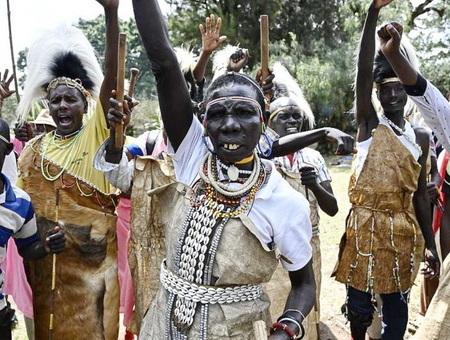

The Sengwer people (also known as Cherang'any and previously as Sekker, Siger, Sigerai, Segelai, Senguer, Senguel and Jangwe) are an indigenous community who primarily live in the Embobut forest in the western highlands of Kenya and in scattered pockets across Trans Nzoia, West Pokot and Elgeyo-Marakwet counties. The Sengwer are sometimes portrayed as a component of the Marakwet people but are a distinct ethnic grouping.
Sengwer are a hunter-gatherer people, numbering around 33,000 people. Historically located in the Embobut forest in the Cherangani Hills in western Kenya, in recent years the community has been subjected to repeated evictions by Kenya Forest Service (KFS) security forces in the name of supporting the area’s conservation, despite the community’s demonstrated track record of sustainable environmental stewardship in the forest.
The Sengwer people are currently a marginalized community and face significant threats to their identity and ancestral lands. International and human rights organizations including the United Nations, Amnesty International and the Kenya Human Rights Commission recognize the Sengwer as indigenous peoples whose claim to the area goes back hundreds of years and have repeatedly raised concerns about human rights violations against them.
The Sengwer’s problems started during British colonial rule in the 1950s, when their ancestral land was converted into a conservation area and the colonial government of the time forced them off their land. Though the community was ultimately able to continue hunting and gathering, following Kenya’s independence their land was seized by supporters of the country’s new political elite. While the community still had access to Embobut forest, in the 1990s, the Kenyan government designed a harsh conservation programme that forcefully evicted all people from ‘purported’ conservation areas, including Sengwer.
They were only allowed back onto their land after pleading with then President Daniel Arap Moi. But with the change of regime from Moi to President Mwai Kibaki in 2003, the Sengwer were again evicted. The Sengwer successfully secured a High Court injunction in 2014 stopping all the evictions until all outstanding issues were resolved with the government. But the Kenya Forest Service failed to respect this and continued with the evictions, torching down hundreds of huts belonging to Sengwer families.
The evictions accelerated when the government secured millions of dollars worth of Reducing Emissions from Deforestation and Forest Degradation (REDD). The World Bank led REDD programme seeks to create financial value for the carbon stored in forests, offering incentives for developing countries to reduce emissions from forested lands and invest in low-carbon paths to sustainable development.
The World Bank and the government proposed to compensate and resettle the Sengwer community. However, the Sengwer community rejected the compensation and asked to be allowed to resettle in their ancestral land.
Kenyan Forest Service guards have been responsible for repeated forced removals of the Sengwer community from their land in the Cherangany Hills area of the Embobut Forest. These evictions occurred as part of the World Bank-financed Natural Resource Management Project (NRMP). According to an investigation by the LA Times, the World Bank knew as early as 2010 about the removals in conjunction with the programme and warned the Kenyan government in 2011 that it would take action if they continued; however, the house-burnings and evictions persisted but no action was taken.
Sources: